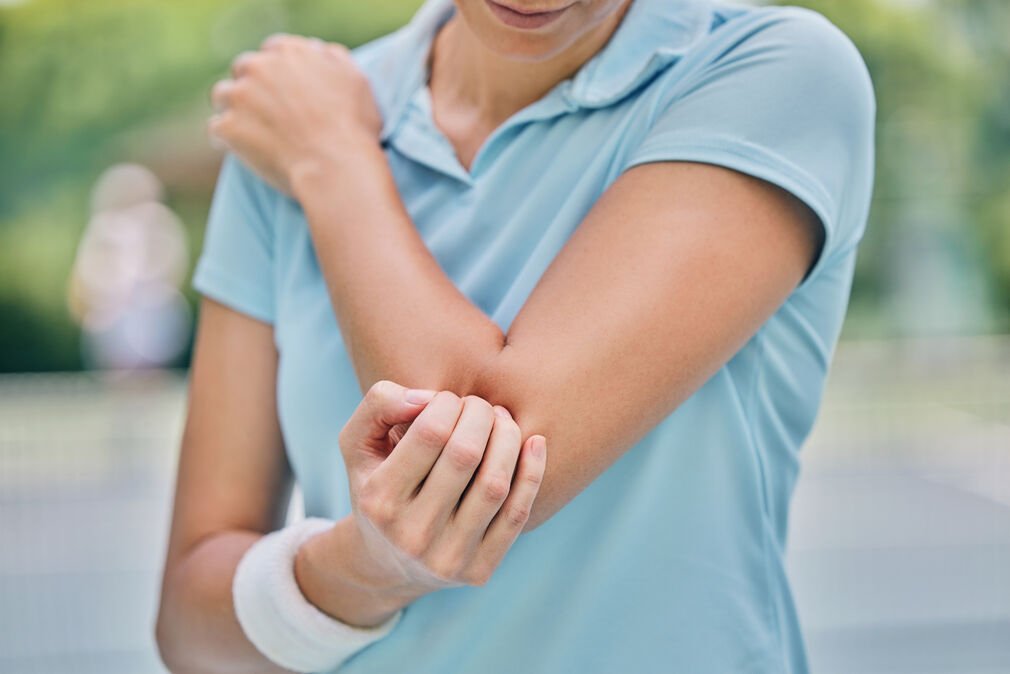Introduction
Padel, a thrilling racquet sport that combines elements of tennis and squash, has captured the hearts of sports enthusiasts around the world. However, with the excitement of the game comes the risk of injuries, with tennis elbow being a prevalent concern among Padel players. In this practical guide, I will explore effective strategies for preventing, diagnosing, and treating tennis elbow in the context of Padel.
Prevention: Padel-Specific Strategies
Preventing tennis elbow in Padel involves a combination of proper technique, equipment selection, and conditioning. Here are some Padel-specific prevention tips:
- Technique Mastery: Focus on proper swing mechanics and wrist positioning during shots, especially the backhand. Ensuring a fluid and ergonomic swing can minimize strain on the forearm tendons.
- Warm-Up Routine: Begin each Padel session with a thorough warm-up that includes dynamic stretches and light cardiovascular exercises to prepare the muscles for action.
- Strength and Flexibility: Incorporate exercises that strengthen the forearm and the rotator cuff muscles of the shoulder and improve wrist stability and shoulder flexibility. Resistance training and stretching routines can significantly reduce the risk of injury.
- Grip Size and Racket Weight/Balance: Choose a Padel racket with an appropriate grip size and weight. A racket with a head-heavy balance or generally too heavy can exacerbate strain on the forearm tendons. Centre and low-balance rackets are preferred to help reduce strains.
- Racket Materials: When selecting a Padel racket, prioritize Carbon Fibre due to its superior material quality. Additionally, consider the core quality to reduce shock and vibration transmission to your arm.
Diagnosis: Recognizing Tennis Elbow in Padel Players
Early diagnosis is crucial for effective treatment of tennis elbow. Padel players should be vigilant for the following signs:
- Pain and Tenderness: Persistent pain on the outer side of the elbow, particularly during or after Padel sessions, is a tell-tale sign of tennis elbow.
- Weakness: Difficulty gripping and a feeling of weakness in the affected arm may indicate compromised forearm tendons.
- Stiffness: If you experience limited mobility in your elbow or forearm, seek medical attention to assess the cause.
Treatment: Padel-Centric Approaches
Prompt and appropriate treatment can aid recovery and prevent the condition from worsening. Consider these Padel-centric treatment strategies:
- Rest and Modification: Allow your arm to rest and refrain from playing Padel until the pain subsides. Modify your gameplay to avoid movements that exacerbate the pain.
- Physical Therapy: Seek guidance from a physiotherapist who understands Padel-specific movements. They can prescribe exercises that target the affected muscle groups.
- Padel Racket Assessment: Evaluate your Padel racket to ensure it is well-suited to your playing style and physical condition. Consult with experts who can recommend an ideal racket for injury prevention. The BAS3LINE rackets have been specifically created with the intention of preventing injuries.
- Anti-Inflammatory Measures: Ice packs, anti-inflammatory medications, and topical treatments can help manage pain and reduce inflammation. As well as electrotherapy treatments such as Shockwave and Ultrasound therapy.
- Bracing and Compression: Utilize braces or compression sleeves to support the forearm muscles and alleviate strain during play. Kinesio taping can also help.
- Gradual Return to Play: After recovering, gradually reintroduce yourself to Padel sessions, focusing on proper technique and mindful movement.
Conclusion
Tennis elbow, while common among Padel players, doesn’t have to sideline your passion for the game. By implementing Padel-specific prevention strategies, recognizing the early signs of the condition, and pursuing tailored treatment approaches, you can effectively manage tennis elbow and return to the court stronger and more informed. Remember, seeking guidance from medical professionals and experts who understand both Padel and the intricacies of tennis elbow is essential for a safe and fulfilling Padel experience.

